
The Sun has been showing increased activity over recent months and with its position in the sky now optimal from the UK, this is a great time to review some of the techniques required to image it. Solar imaging isn't without risk, and concentration needs to be high at all times to avoid accidents. It goes without saying that you should never look directly at the Sun nor point any instrument at it without using appropriate filters.
The two most common ways to view the Sun using a telescope are in white light or with a solar narrowband filter. Ready-made white-light filters are available or you can make your own (following instructions provided by the supplier).
Narrowband filters are more expensive and can be either built into a dedicated solar telescope or supplied to convert a night-time telescope, typically a refractor, into a speciality narrowband instrument. Common narrowband filter types offer views in hydrogen-alpha or calcium-K, the former being the most common. Other wavelengths are also available.
White-light filters show photospheric phenomena such as sunspots, sunspot groups, faculae, limb darkening, solar granulation and very rarely - solar flares. Features in white light tend to change in form subtly over the course of a few hours or days.
H-alpha filters reveal chromospheric and inner atmosphere (corona) features including active regions, plage, spots, spicules, filaments, fibrils, dark mottles, prominences and flares..
Denne historien er fra July 2023-utgaven av BBC Sky at Night Magazine.
Start din 7-dagers gratis prøveperiode på Magzter GOLD for å få tilgang til tusenvis av utvalgte premiumhistorier og 9000+ magasiner og aviser.
Allerede abonnent ? Logg på
Denne historien er fra July 2023-utgaven av BBC Sky at Night Magazine.
Start din 7-dagers gratis prøveperiode på Magzter GOLD for å få tilgang til tusenvis av utvalgte premiumhistorier og 9000+ magasiner og aviser.
Allerede abonnent? Logg på

Putting cosmic rays to work
These penetrating interstellar particles have applications from astronomy to archaeology
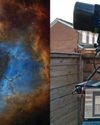
Set up your first imaging sequence
How to automate and coordinate your gear over multiple nights of imaging

The Universe without gravity
Life with no gravity might sound a fun idea, but as Govert Schilling explains, shutting off this pivotalforce would spell disaster for Earth and beyond
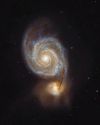
How to blend images taken with different camera setups
Combine data captured at varied focal lengths to create rich, deep images

INSIDE THE SKY AT NIGHT
Back in September 2021, The Sky at Night show spoke to Carly Howett about NASA's then upcoming Lucy mission. As the spacecraft now approaches its main targets - the Trojan asteroids - we check in with her to see how the mission is going

The science of SCI-FI
We love a good sci-fi film, but do they get the science right? Amy Arthur picks six of the big mistakes made in space films
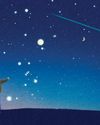
Seeing in a new light
It's National Astronomy Week this month, so take a tip from Mark Westmoquette and let mindful stargazing change your perspective on your life and problems
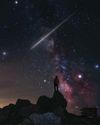
What to do if you find a meteorite
Ever come across an unusual rock and wondered if it's a meteorite? Mark McIntyre explains how to tell if that stone really is a fragment from outer space
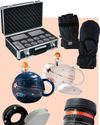
GEAR
Charlotte Daniels rounds up the latest astronomical accessories

Q&A WITH A STELLAR ECLIPSE SPECIALIST
Many stars are gravitationally locked inside multi-star systems, but a rare new triple-star system has set a new record for how cosy these clusters can get